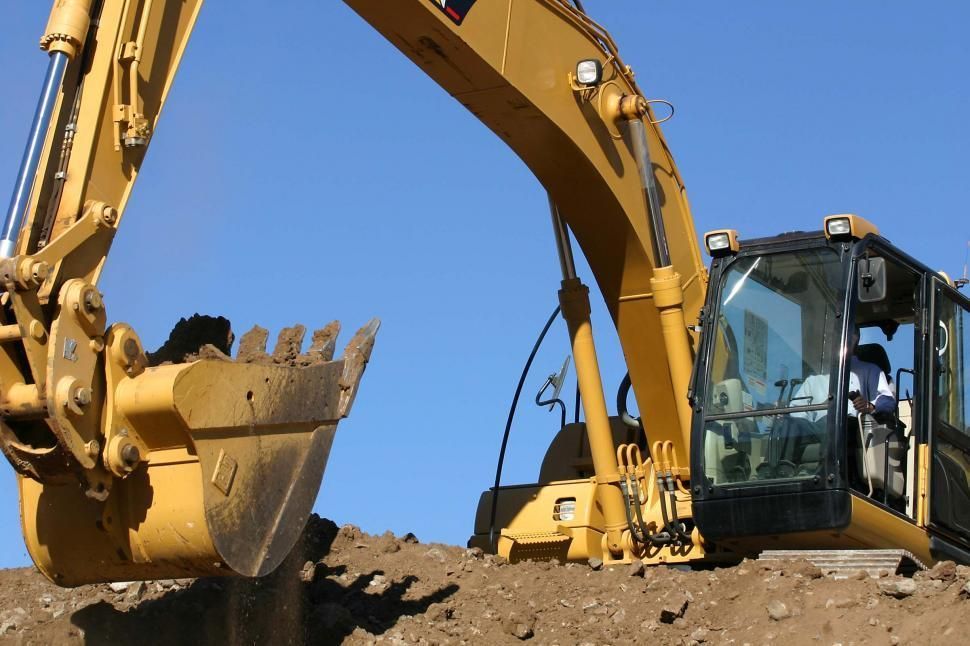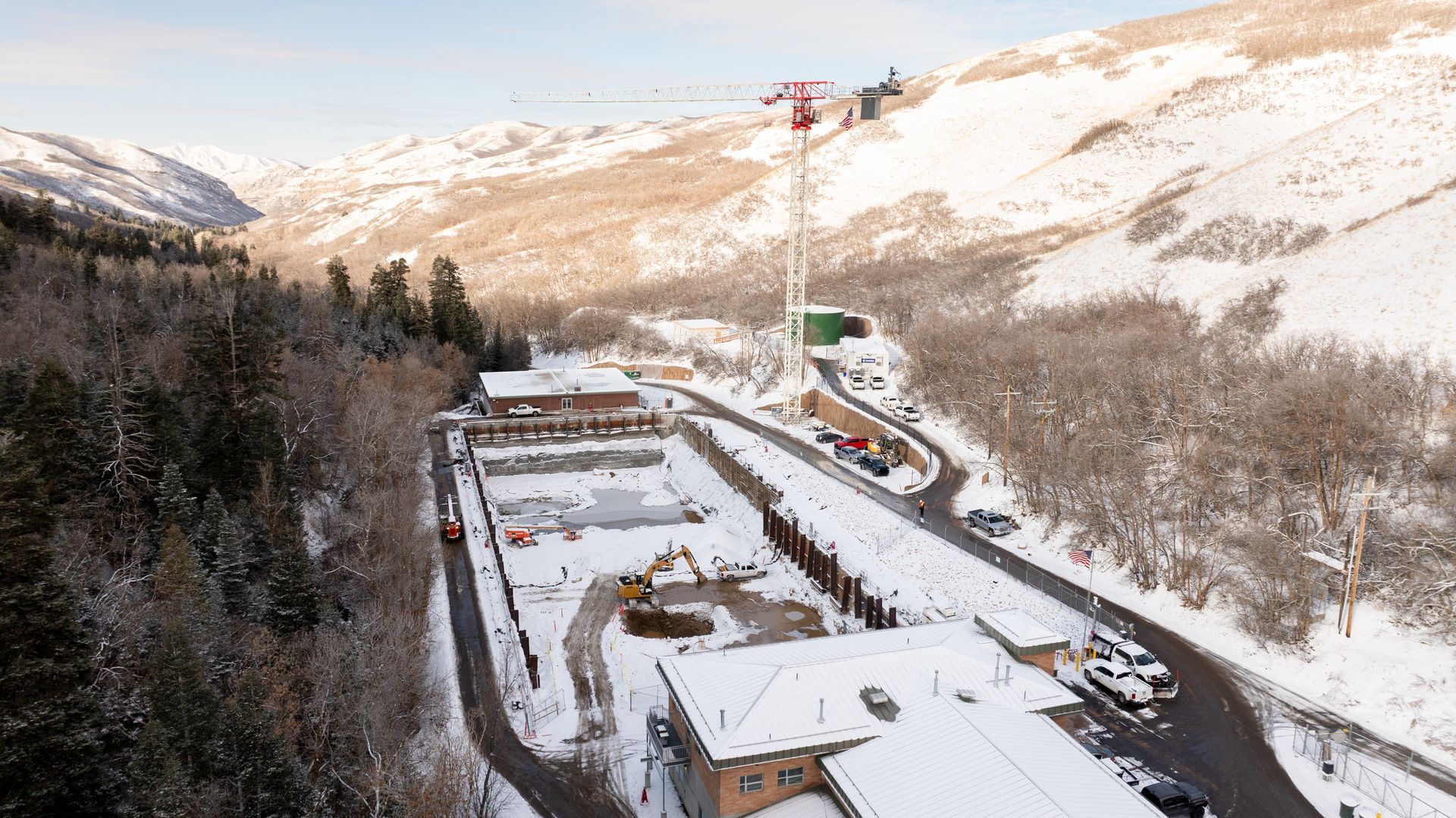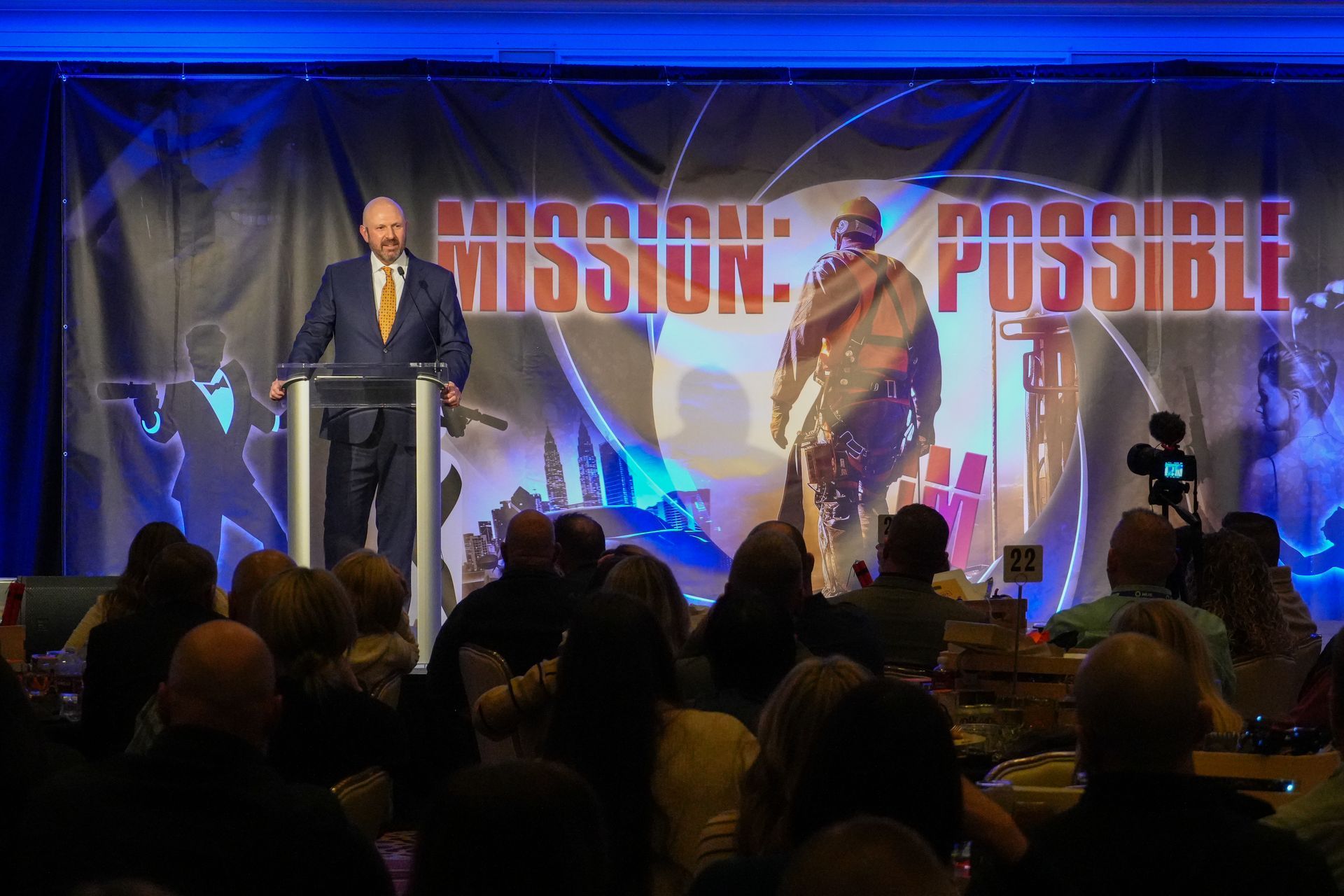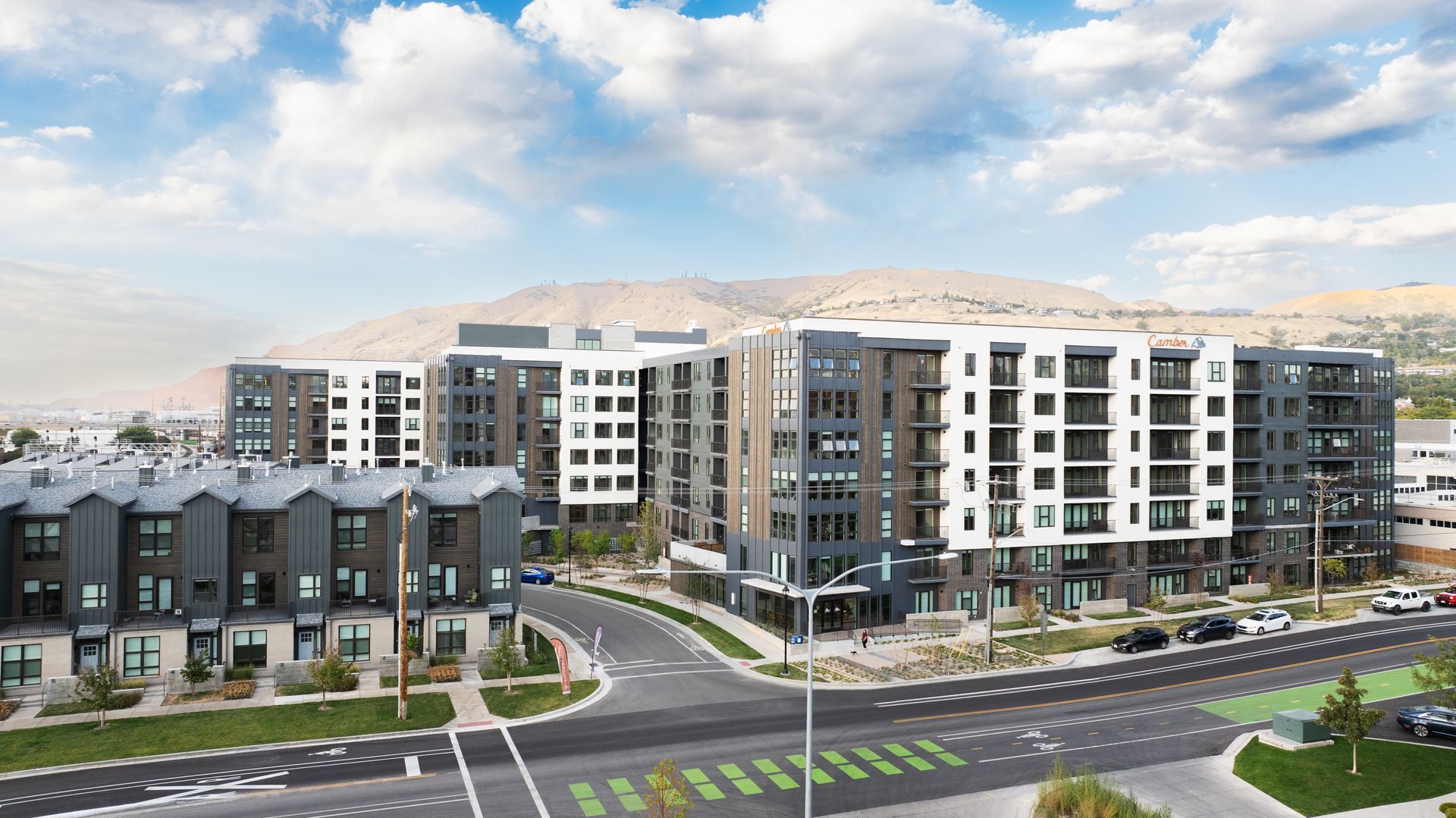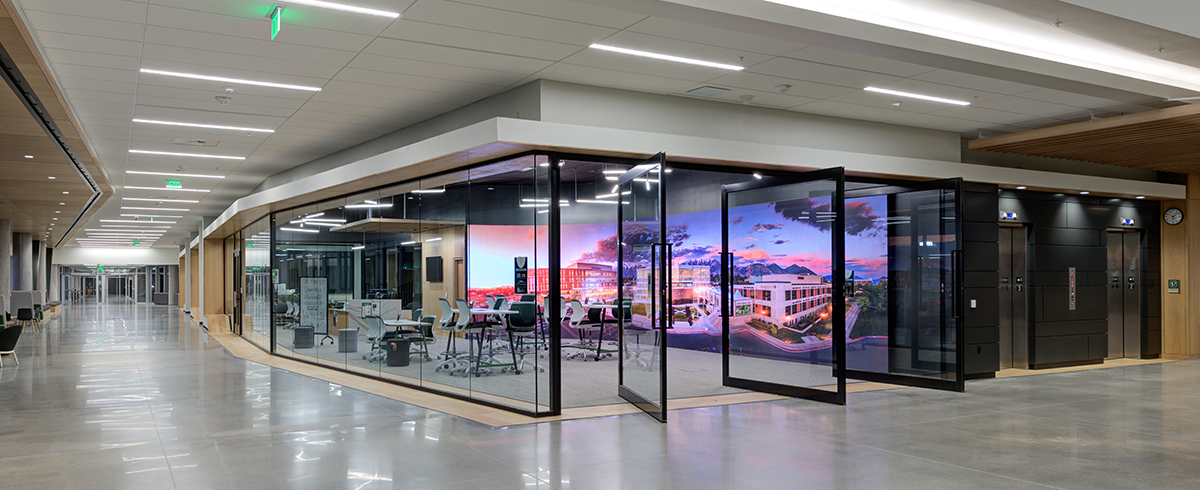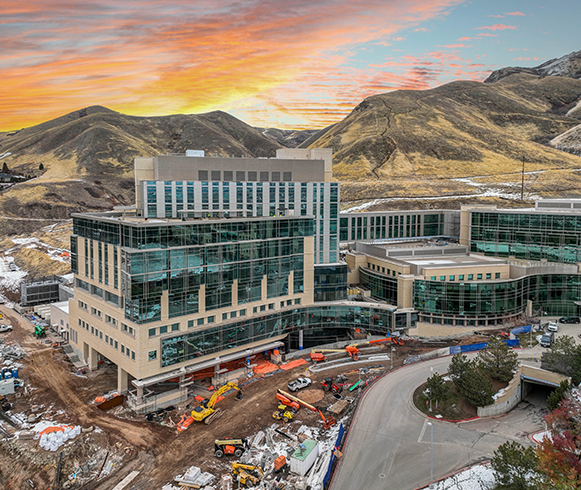It's been a fast and furious four years for Sandy-based Layton Construction since it merged December 23, 2019, with New-York based STO Building Group (formerly Structure Tone Organization), the impetus of which came about as a way for the firm to give every employee ownership opportunity via a stock program.
That was ultimately important to David S. Layton, 61, President/CEO of Layton Construction since 2004—a way for him to show his genuine appreciation to the many loyal people that have helped grow the firm from a primarily western regional general contractor into an industry-leader nationally, with ongoing projects in 27 states and annual revenues pushing the once unthinkable $4 billion mark.
Layton is a unique corporate leader with all the requisite traits and characteristics needed to oversee a steadily growing company of 1,500 employees. He has a jovial, upbeat, friendly-neighbor-next-door personality, which makes him easily approachable. He's a true visionary, and he expects those working with him to be self-starters, while simultaneously coaching up employees to maximize their potential.
As the youngest of 10 children, Layton grew up in the family business aware of the possibility that he'd be tasked to lead the company one day, provided he proved his mettle along the way.
Father Alan W. Layton founded Layton Construction in 1953 and was a true throwback from what is commonly referred to as the "Greatest Generation"—people born between 1900-1925, many of whom valiantly fought in World War II. He was a U.S. Army Captain during WWII and led his artillery battery during the legendary Battle of the Bulge.
Brother Alan S. Layton was also a valuable mentor to Layton and served as President/CEO of the company from 1985 to 2004. When Layton took over the reins from Alan, Layton Construction enjoyed status as a perennial top three Utah-headquartered general contractor, often ranking first in total annual revenues.
Since that point, firm revenues have exploded ten-fold—2021 revenues were a company record $3.86 billion; 2022 revenues were $3.51 billion—gaudy numbers that just a decade ago would have seemed incomprehensible for a Utah-based contractor to hit, and, if submitted independently, would be good enough to put the firm in the 30s in ENR’s Top 400 rankings. Layton’s revenue is included with STO Building Group’s ranking at No. 5.
Layton earned a Bachelor of Civil Engineering from Brigham Young University in 1988 and a Harvard Business School executive management certificate in 2000 after completing an extensive three-year program with top executives from around the world. He has served in many community capacities, including on the boards of the Utah Sports Commission, the Hale Centre Theatre, and is a current board member of the Salt Lake City Committee for the Olympic Games.
Layton has also contributed significant time and money to the University of Utah as a member of the U's National advisory council, National Athletics advisory board, the College of Engineering National advisory board, and the University Healthcare Board of Trustees. Two buildings at the U even bear his name: the David S. Layton Golf Academy (opened January 2021) and the Julie M. & David S. Layton Field Club within the Ken Garff Red Zone section. David and Julie are the parents of six children and 14 grandchildren.
UC&D Publisher Brad Fullmer recently conducted an exclusive interview with Layton, to get his take on the company's past, present and future, and where he sees himself in ten years.
UC&D:
It's been a brave new world for Layton Construction, given the merger with STO Building Group nearly four years ago. What are some of your thoughts on where the company is now, as you celebrate 70 years of construction excellence?
Layton:
70 years is a long time! I give my dad a lot of credit for being willing to quit his job at the Bureau of Reclamation, and with a small, growing family say, "I'm going to start a construction business". My father had a strong work ethic—he worked as a teenager in agricultural fields, worked for the railroad. Also the youngest of 10 children (born in 1917), he was helping support his family during the Depression. He taught us to work hard. And if you love hard work, start a construction business (laughs). He picked a hard one, but he leaned into it. He knew how to bring a team together and make things happen. He was an all-state athlete, played varsity basketball at the University of Utah in the late 30s, and was a captain in the Army. He led his men across France, into Belgium as they were engaged in the Battle of the Bulge. My dad was a real leader. Part of the reason for the success of our business is his ability to lead people to accomplish great things. He had a lot of sayings, including "Say what you do; do what you say". Construction was the end game, but work was the means that got us there. And I'm still working (laughs)!
UC&D:
Was it a given that you would work for the family business?
Layton:
Of course! Construction was the family business, much like a family farm is a family business—it's what we did. It was well understood that I would go into the family business because we're builders—this is what we do! At a very young age I pushed a broom, I picked up boards as a laborer, I got exposed to many aspects of our industry as a teenager and as a carpenter. We knew that we were contractors.
UC&D:
While you were earning a Bachelor of Civil Engineering from BYU in the late 80s, you had the opportunity to work as an Assistant Superintendent on a Layton Construction project—a combustion lab on the BYU campus. What do you recall about that project?
Layton:
I had to know that project inside and out—the scope of work, the details, the schedule, the expectations of our clients, and what was important to the subcontractors. I had to be a student of the project so I could provide some leadership. It was a bit of a laboratory for me, having the luxury of a project on campus where I was getting an education. It was a smaller remodel project, but it had all the elements of a bigger project on a scale I could get my arms around and understand. I also learned a lot of language I hadn't heard before (laughs)!
UC&D:
After graduating, you worked full-time for Layton Construction, which had transitioned at that point to being led by your brother, Alan. What do you recall about the 90s and your first decade as a professional?
Layton:
Dad was still around and still in charge, but he was smart enough to start that transition process with my brother letting him take the reins of the business. When I got out of college, I moved to Nevada to work on a state prison project in Ely, which evolved into a superintendent role. In 1990, I got a phone call from my brother who said, "move back to town, you're going to be the chief estimator." I didn't know anything about estimating, but it was a fresh opportunity. At the time, we were a family-owned general contracting firm, hard bidding projects, competing on price and trying to win with strategy and relationships. Through the early 90s, the emergence of construction management (CM) at-risk began to unfold in the State of Utah. I started going out and meeting with clients and working towards negotiating projects instead of bidding projects. Throughout the 90s, my role progressed from being an estimator to being the head of preconstruction and business development—bringing opportunities in the door, getting projects priced up and transitioned to a project team.
In the late 90s, one of our board members suggested I be given the responsibility for the Phoenix office—that's where I got, really, the first independent leadership role [...] and became President of Layton Southwest in 1998. That opportunity really gave me the chance to expand my leadership skills in preparation for what ultimately was the opportunity in 2004 to lead of the whole company. It was very much a progression of one day you're going to be leading the company, so let’s get you prepared for that responsibility so that you have the skills to be able to successfully lead the organization. It wasn't a gift, wasn't an entitlement, just opportunity.
UC&D:
You thrived professionally during your six-plus years leading the Phoenix office (1998-04) and helped the company grow substantially. How was that experience?
Layton:
After my first full week, I came home and told Julie, “There’s a part of me saying it's going to be the easiest thing in the world, because I know what we needed to do, but I know it's going to be really hard, because there was so much to do." We needed to grow our business and over a five-year period we went from $15 million in annual revenue to $150 million, which put us more on the map, and in the minds of clients. The ability to lead the organization was founded primarily in the minds and hearts of the people you have to lead. I had demonstrated the necessary skills so when my brother departed the business, it was natural for the employees to say, "We're in good hands." And we've spent the last 20 years demonstrating that we could do it.
UC&D: Layton Construction has been a proven healthcare contractor for many years, having built an exceptional team of professionals and a portfolio of some of the biggest, most complicated healthcare projects in the nation. How did this all transpire?
Layton: In the early 2000s we pursued a major healthcare project [in Utah] for which we were not selected. We had previously built several major healthcare projects, so we had some experience. We hired key staff to pursue this major project [...] and following the notice we were not selected, we pivoted the strategy to pursue other healthcare clients with these resources. That was the genesis of our now nationally-recognized expertise, which is working with many systems across the country. We've typically been recognized in the top 10—if not the top 5—healthcare contractors nationally over the past 15 years.
We didn't build that healthcare project, but we did build a healthcare business—that was the outcome of not being selected. The commitment we’ve made in many of our industry sectors, but particularly healthcare, is to use professionals who are dedicated to just healthcare projects. As a result, they have a level of expertise, understanding and sensitivity that allows us to be more successful than a generalist. Our clients recognize the difference Layton brings. I've had numerous clients tell me that we are the most professional and well prepared team, and they value us as an integral part of their organization because we understand so much about how they want to deliver their project. We can bring that to a project time and time again. It's almost a virtual integration between the client’s organization and ours.
UC&D: Layton’s annual revenue growth has been impressive, with more than $3.5 billion the past two years and over $3 billion in 2020. Those are some lofty numbers!
Layton: We've been willing to diversify the business geographically and by market segment; we've added major expertise in warehouse distribution markets, as well as mission critical data center markets. None of this would be possible without a very talented set of professionals who give their all, every day, for the company. They're great teammates and they have entrepreneurial spirits.
With that said, we have never been driven by growth. We've never set a target to be a certain size. We’ve looked internally at our talent to give them career growth opportunities. Our growth has been a result of having a business strategy to embrace the aspirations of our employees. If we're not growing, we're not able to hang on to great talent, just like any team that is not winning struggles to retain talent. The more you win, the more you attract talent from elsewhere that wants to be part of a winner.
UC&D:
In December 2019, Layton Construction merged with STO Building Group (formerly Structure Tone Organization). How did this venture come to pass? How long did it take to execute negotiations? What did you see as the main benefit(s) of this strategic move?
Layton: Over the years, I had been approached by industry brand names about merging with them. My answer had typically been a quick no. This opportunity with STO sounded different and we were willing to listen. Because we are so relationship-based in our business model, we saw the opportunity to grow our relationships with the clients STO had already established, being based in New York City and working with many Fortune 500 companies. And we worked the deal out in six months.
Secondly, we needed to expand the opportunity to share a piece of the pie with our employees. A merger with STO provided us the opportunity to offer ownership to all employees. Given the success of the business, not only from [organic] growth but the expansion of our bottom line, we had a lot of demand from existing shareholders to acquire more shares and from other employees who also wanted to become shareholders. Being able to offer ownership to all employees is important to the Layton family, and the merger expanded opportunity to do so.
This was not in the script. We had a very successful business, we had a very loyal employee base, and very loyal clientele. We would have never perceived this was the path, because we had said no in the past, but we listened and understood. We could see how this could be highly beneficial and it's proven to be that way.
UC&D: Among the dozens of high-profile projects Layton has built are several major sports-related projects, which are one of Layton Construction's hallmarks, specifically the University of Utah's Rice-Eccles Stadium expansion in 1998, America First Field (formerly Rio Tinto Stadium) in 2008, the Albertson's Stadium Stueckle Sky Center at Boise State University in 2008, and most recently the U of U's Ken Garff Red Zone (south end zone) stadium expansion in 2021. Another cool recent project that opened in January 2021 is the U's David S. Layton Golf Academy, which bears your name. As an engaged sports fan, what do these projects mean to you?
Layton: These sporting venues are so high-profile and there are a lot of eyes of the project. You’re tested every day; you have a date-certain completion regardless of supply chain issues, regardless of weather. These projects are great tests; we've been able to measure up. Our clients recognize that we will deliver for them, limit their exposure and risk, and that’s part of why we get selected for these jobs.
UC&D: Every great business leader needs compensatory "down time" or an outlet to unwind from the day-to-day grind. What works for you?
Layton: As you can imagine, my personal life and business life are fully integrated—there is no separation. So, golf has been an outlet for me. It’s not so much about the business development opportunities—those exist—but I've met a lot of great people and been to a lot of great places because of golf. It's a chance to unplug for four hours and let my mind get away. I'm the type that doesn’t want to play golf every day, but it is something I look forward to.
UC&D: You've had the opportunity to work closely with your wife, Julie, for the past 20-plus years, and she has served in a variety of key roles for the company during that time. A lot of people say it would be challenging to work professionally with a spouse. How have you two made it work and what are her greatest skills and attributes?
Layton: Anybody that know my wife knows she's a
superstar with so many skills and so much personality. She's got some management responsibility and heads up our philanthropic and community service programs. It's been a perfect opportunity for us to have a great personal relationship but also work together professionally and grow from that.
UC&D: You're in your early 60s, which is a point in time that most people in society are winding down their careers, looking to escape the 9-to-5 grind and live the "good life" of retirement. It looks like you're doing the complete opposite in leading Layton Construction to greater heights and into uncharted territory. What is the outlook for your career from now to the end of this decade?
Layton: People ask me why I didn't retire years ago. I
love what I do and I enjoy the people I work with. My teammates at Layton are simply awesome! Construction is very hard, but very satisfying. The people I've met and the relationships that have come as a result is what's hard to let go of. I'm healthy, I'm happy, and don't get me wrong, it's hard work. But it's
satisfying. Let's not forget the work ethic that dad instilled in us. You just keep going!
